Alienware's M18x, Part 1: NVIDIA's GeForce GTX 580M in SLI
by Dustin Sklavos on October 3, 2011 11:50 AM ESTApplication and Futuremark Performance
In our Alienware M18x review unit, we're basically dealing with a notebook sporting a desktop-class processor. Four cores, eight threads, and clocks well above 3GHz, all on the architecture with the fastest IPC in the desktop space. So how does it do?

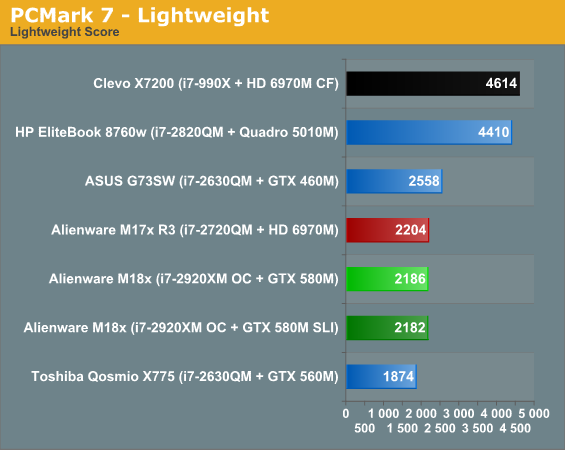
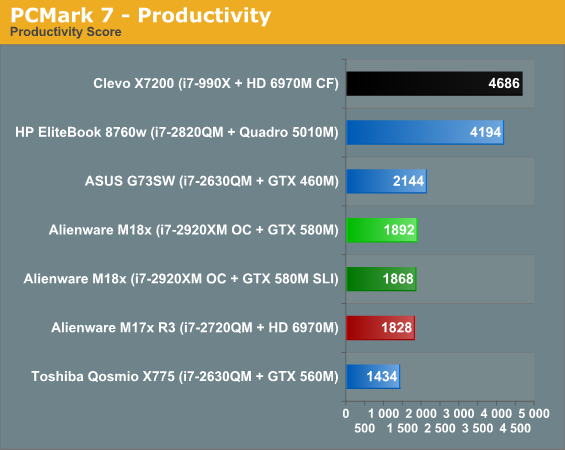
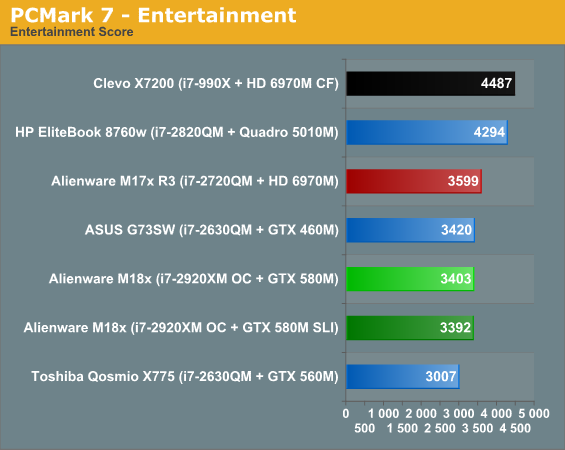
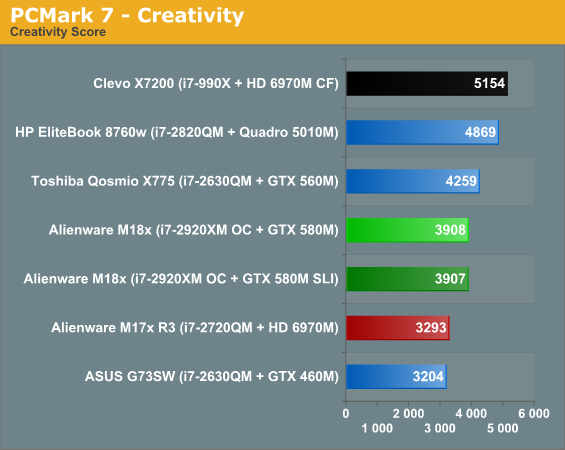
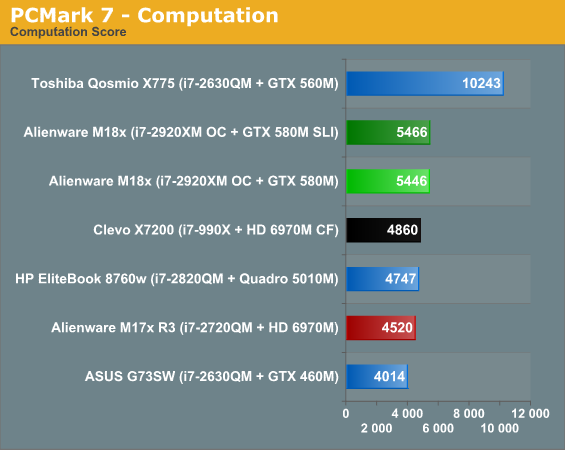
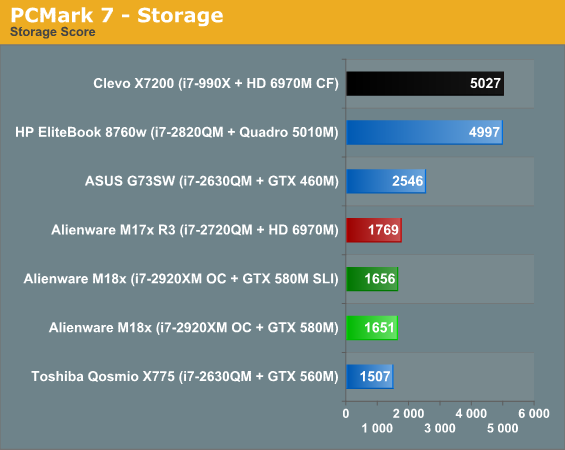
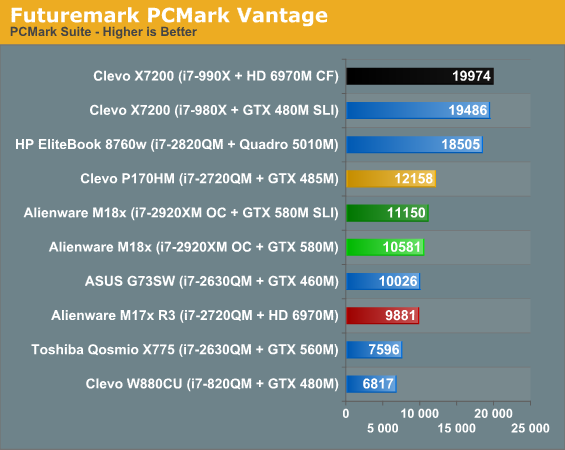
SSD-equipped systems like the HP EliteBook 8760w and Clevo X7200 are able to leverage those advantages in some of these tests, but PCMark doesn't really tell the whole story. Notice how in some tasks the otherwise considerably slower ASUS G73SW is able to take the lead over the M18x and its overclocked i7-2920XM. So let's see what happens when we shift the bulk of our testing to the CPU proper.

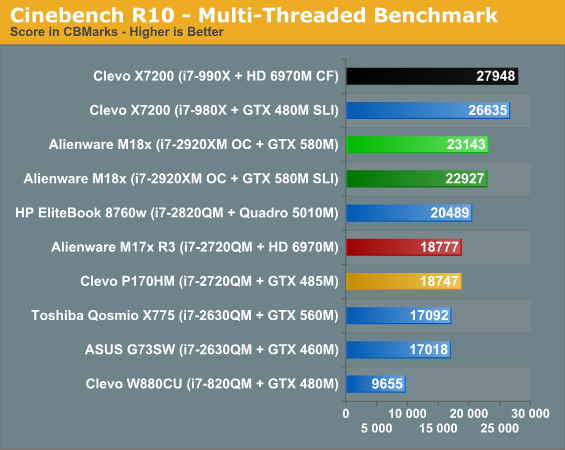
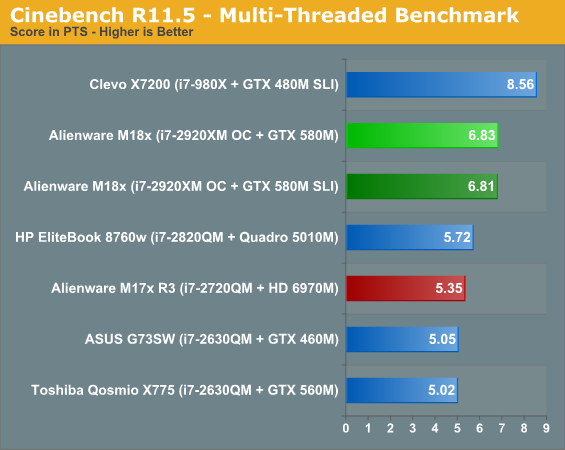

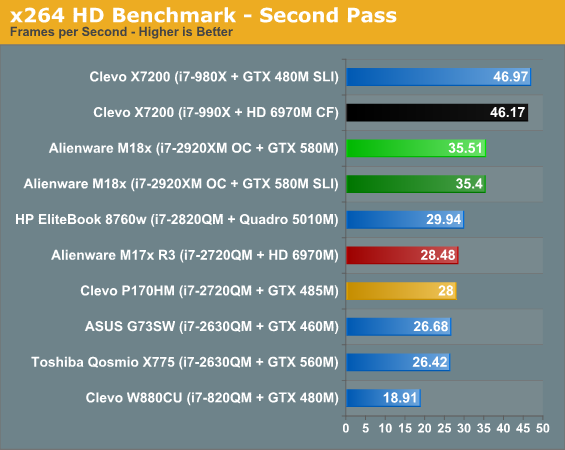
And "boom" goes the dynamite. Unless a task can really leverage the additional two execution cores of the desktop i7-990X in the Clevo X7200, the overclocked i7-2920XM dominates the charts just like we'd expect. Sandy Bridge's increased IPC over Gulftown makes opting for the desktop-CPU-based Clevo X7200 only more questionable, while the high overclocks on the i7-2920XM question the necessity for a desktop-CPU-based notebook at all.
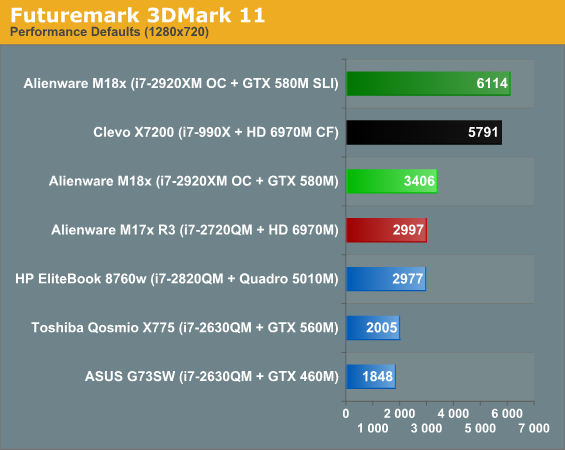
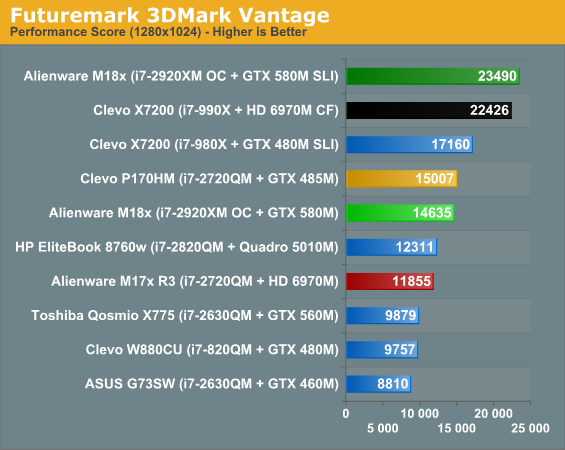
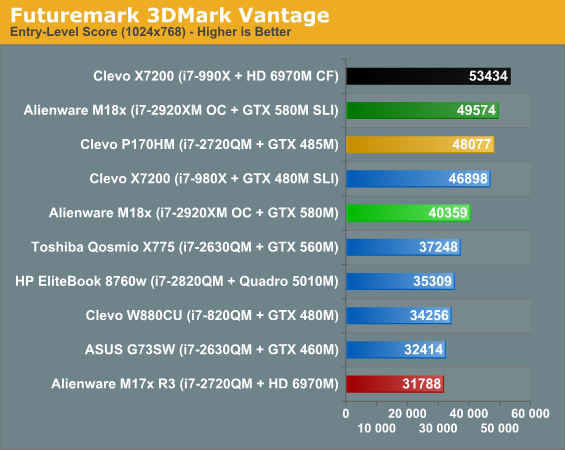
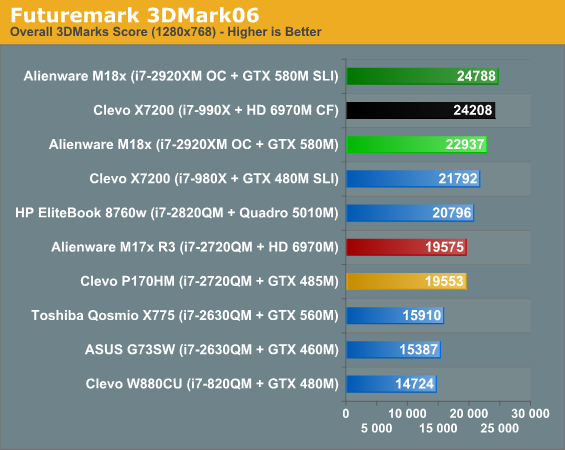
Meanwhile the NVIDIA GeForce GTX 580M dukes it out with the AMD Radeon HD 6970M in 3DMark. In single-GPU configurations NVIDIA seems to have the advantage, but once you get to dual-GPU configurations that advantage narrows substantially. The pair of 580Ms seem ever so slightly faster than the two 6970Ms, but we won't know for sure until we take a look at the gaming results.










32 Comments
View All Comments
rsandoz - Monday, October 3, 2011 - link
What about the case?I believe the m17xr3 is plastic.
The m18x has an aluminum case. I actually own this with 6790 CF. This one was of the deciding factors as I have own the m17xr1 and m17xr2. When I saw the r3 had a plastic case much like my m11xr1 with cracking hinge problem, I decided against it. Didn't want to talke a change on cracking hinges again. Probably not the case, but an aluminum case feels much more solid.
rsandoz - Monday, October 3, 2011 - link
<<Wish I could edit posts. Spell corrected.>>What about the case?
I believe the m17xr3 is plastic.
The m18x has an aluminum case. I actually own one with 6790 CF. This one was of the deciding factors as I have owned the m17xr1 and m17xr2. When I saw the r3 had a plastic case much like my m11xr1 with cracking hinge problem, I decided against it. Didn't want to take a chance on cracking hinges again. Probably not the case, but an aluminum case feels much more solid.
Dustin Sklavos - Monday, October 3, 2011 - link
The M18x's case only has an aluminum plate on the lid and aluminum trim, at least as far as I can tell. I honestly didn't find the build quality to be radically different enough from the M17x R3 to merit mentioning.rsandoz - Tuesday, October 4, 2011 - link
My main cause for concern was the "after 6 or so months factor". Does the m17xr3 have a cracking hinge issue after 6 months. I had an m11xr1 and after 8 months the hinges cracked internally. Felt like the ultimate hooptie laptop. Plus the plastic case has more scratches on it than my m17xr2.Death666Angel - Monday, October 3, 2011 - link
Seeing how this is pretty much a desktop in most terms, I would like to know what kind of PSU is shipped with the unit. Also, could you provide power consumption while gaming/stressing the system with the different setups? I'd be interested in the difference between the nVidia and AMD GPUs used here. :-)Otherwise, a good review and a monster of a laptop. Nothing for me though.
Ushio01 - Monday, October 3, 2011 - link
Buy the Core i7-2860QM instead it has same base clock with higher turbo boost and a 10W lower TDP for $500 less.JarredWalton - Monday, October 3, 2011 - link
That doesn't make a review "meaningless". The TDP is simply maximum power; in most loads you won't hit that level. As for saving $500, sure, go for it, but remember you'd also give up overclocking of the CPU. If you're already willing to spend around $3500 for this sort of notebook, what's another $500 to boost CPU speeds from 2.5GHz base and 3.6GHz max to 3.5GHz base and 4.2GHz max. With GTX 580M SLI, you'll probably actually realize a performance improvement from the CPU overclock in games.Ushio01 - Monday, October 3, 2011 - link
Sorry I never meant the review was worthless in itself just the out of date CPU.JarredWalton - Monday, October 3, 2011 - link
Understood, but I'm pointing out that the overclockable CPU might be worth the upgrade price, at least if you're willing to spend this much in the first place (I'm not). The i7-2860QM has the same base clock, but unfortunately the laptop Alienware sent is using the earlier i7-2920XM instead of the newer i7-2960XM. Either way, the XM model CPUs will get you unlocked multipliers and the ~$500 28x0QM chips won't.aznofazns - Monday, October 3, 2011 - link
I'm not sure you'd run into any significant CPU bottlenecks with a stock i7-2860M, though.The argument that the $3500 already spent justifies the additional $500 for the unlocked multiplier doesn't really make sense. The $3500 is a sunk cost. It's already gone and shouldn't affect the decision to spend more on the CPU.
The real question is... what is the marginal benefit of the 2920XM over the 2860M? Would you really be seeing significantly higher framerates? I'd say probably not. The dual GTX580M's in SLI would still be the bottleneck for gaming at 1080p, unless I'm mistaken.